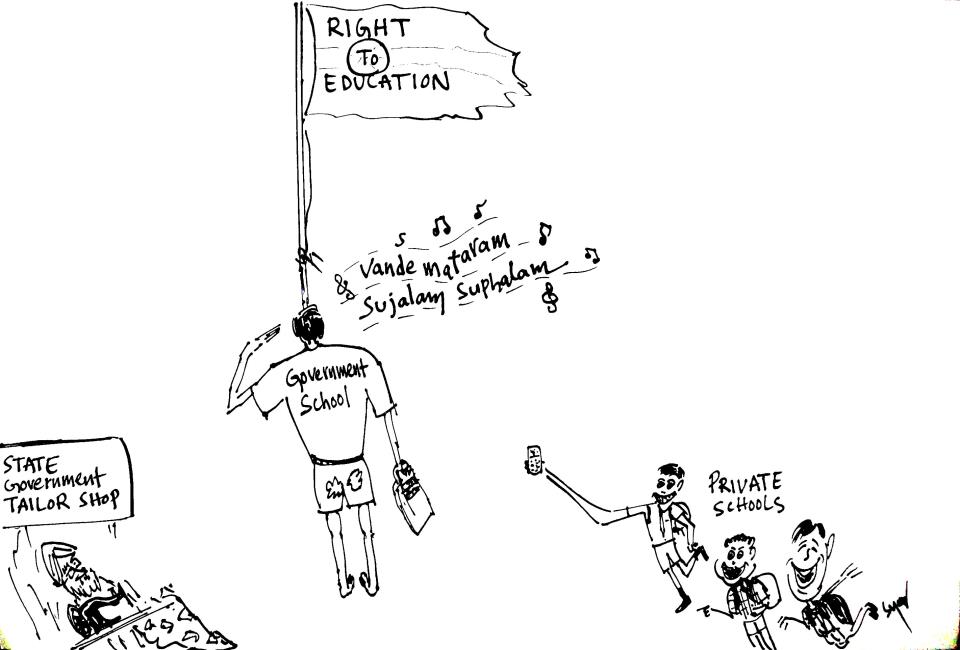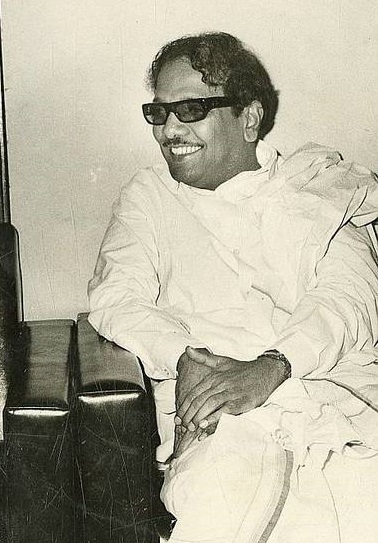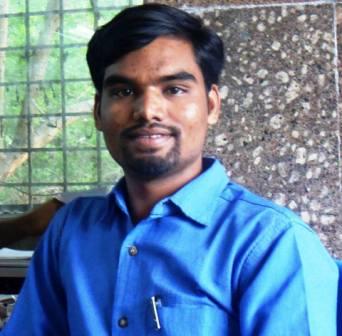Kuffir
Feel hot
Feel a nausea stirring in my stomach
Feel like I am listening to Sanskrit Slokas
~ Madduri Nagesh Babu, in ‘A Rakshasa’s proclamation’.
You might think the ruling classes want all Indians to speak Hindi, to impose Hindi on everyone. That is not the idea, they want to impose the fear of imposition of Hindi on the masses so that they could justify the Indian state’s ‘fairness’ when they eventually make noises to indicate a softening of stand, to appear to retract from their stated position, as they did quickly in the recent instance.
You might also think the Dravidian parties, media and sundry other political outfits and civil society groups and the indignant middle classes, all composed of or dominated by majorly savarna/dominant caste interests, want to oppose the imposition of Hindi. No, they don’t fear the imposition of Hindi either. They too are more interested in the fear of the imposition of Hindi because that is what justifies their own existence as the ‘democratic conscience’ of the so-called Indian nation, as ‘guardians’ of its diversity, by offering them an opportunity to indulge in some high decibel hysterics.
It’s caste, not Hindi
In South Asia and elsewhere, the straightest path to linguistic and cultural autonomy is to claim sovereignty as a distinct political entity, as a nation. That was the path that the Bangladeshis took. But even after over six long decades of steady infiltration of Hindi (in non-Hindi speaking regions) and English (in both Hindi and non-Hindi speaking regions), with active sponsorship of the Indian state, into governmental, educational, cultural and commercial spheres, neither the Hindi chauvinists nor the champions of the non-Hindi languages seem to be doing much to seek the realization of their respective goals. The former seeks to make the central government wave the banner of Hindi as the ‘national language’, periodically, and the latter rises in opposition, also periodically, to speak of ‘Hindi hegemony’ etc.
This coordinated charade of the state’s public display of affection for Hindi and the even more public opposition to it has turned into a very predictable ritual now. The plain truth is the infiltration goes on unchecked, if not overtly through the arms of the government then through all the ideological apparatuses of the state. The plain truth is that the champions of Hindi and its opponents have now become partners to sustain their legitimacy in their respective linguistic constituencies and protect their interests in not just their own turfs but across india.
The plain truth is that the political framework that binds the Indian state together now is the coalition forged together by the savarnas/dominant castes across states. So when the AIADMK or the DMK sprang up to oppose Hindi being ‘imposed’, was it really the imposition of unequal citizenship on the Tamils and other linguistic groups, through the agency of Hindi as the language of the Indian state, that they were opposing? Unequal citizenship is what they themselves practise in Tamil Nadu, as seen in Paramakudi or Dharmapuri, how can they oppose it? Because they can get away with it. Because like them, their pan-Indian partners at the Indian centre (irrespective of parties/alliances in power), composed as it is of representatives of savarna/dominant caste interests from across states, also get away with it in their respective states.
Therefore it is the Indian state that protects them, despite Paramakudis and Dharmapuris in Tamil Nadu, and not Tamil nationalism, just as it protects the Jats in Bhagana or the Kapus in Lakshimpeta.
Most modern nationalist movements that rose in 19th-20th centuries across the world have brought with them the appeal of both the security of a future association based on cultural affinity and the ideal of equality. Logically speaking, most linguistic nationalisms that took birth from the beginning of the 20th century in India should also have generated greater loyalty. But most of them remained inchoate ideologies which could not cross the threshold of caste to reach the dalit bahujan masses reeling under the yoke of brahmanic imperialism disguised as Indian nationalism. They remained ill-formed, weak ideas because the dominant castes which hegemonised them had turned them into toothless cultural particularities which should remain subordinate to the ‘greater’ ideal of Brahmanic/Indian nationalism which purportedly transcends linguistic, ethnic, caste and religious differences.
Of all linguistic nationalist movements, Tamil nationalism has been the most coherent one as it grew out of the egalitarian energies created by anti-caste movements started by Iyothee Thassar and Periyar and therefore its mass appeal had cut across classes. But the promise of their own secure perch in the new hierarchy being developed in post-independence India made the movement’s dominant caste leadership barter away social transformation for caste domination.
It’s caste, not language
I am the carcass of the mosquito which died
stuck between palm leaf manuscripts,
I am the empty centuries bleeding
from the weight of the thorny crown of distorted oral literatures.
~ Madduri Nagesh Babu, in ‘A Rakshasa’s proclamation’.
Through history, across regions, there has always been Sanskrit over and against other Indian languages or the sanskritized forms of those languages over and against the plebeian versions. And even Farsi, sometimes, against Indian languages. And except for a few rare exceptions, none of these Indian languages have enjoyed long steady periods of official patronage as the languages of power, of the state. The proclivity of the ruling classes of independent India to instinctively embrace the sanskritrized form of Hindi or English is very consistent with this history.
The Hindi the state has so aggressively promoted until now is, in a manner of speaking, a genetically modified product that bears little resemblance to any of the 10-20 major dialects of the language still spoken in the country. And it has strayed so far from Hindustani (that was an amalgam of Khari Boli, a dialect, and Urdu) that it is now one kind of Sanskrit. People who speak those various dialects have to unlearn most of their language to learn Hindi. Kancha Ilaiah had talked of a similar experience in Why I am not a Hindu – the Telugu he spoke at home bore no resemblance to the sanskritized form taught at school.
In promoting this sanskritized form of Hindi, the elitist bent of the ruling classes is easily discernible- they don’t want the masses to get any ideas that the Hindi the state speaks is the Hindi they speak at home. Like Sanskrit, it’s a language that needs to be learnt outside home. And from teachers who have inherited the right to teach.

Exclude the majority from learning a language. If that’s not possible, make it inaccessible. If even that’s not possible, make the language itself as exclusive as possible. Those are the three rules by which caste society used/uses language to drive the majority as far away from knowledge and power as possible. In history, it has used all three rules concurrently sometimes, but it has been using a mix of the second and third rules more since the beginning of the colonial rule and the emergence of the idea of mass education.
The languages favoured by the state in India have always been tools of caste.
It’s caste, not English
Several funny arguments clog the ‘national’ discourse whenever the issue of imposition of Hindi comes up; many of them founded more on some popular myths than facts. Consider the following myths:
Myth No. 1: This is a North vs South issue. Like the views of the Bengalis, Maharashtrians, Gujaratis etc., are irrelevant. Like the views of the Santhals, Hos, Gonds and Koyas etc., are irrelevant. Like the views of the speakers of various non-sanskritized Hindis, or dialects, are irrelevant. Sanskritized Hindi as state language disempowers not only the various non-Hindi linguistic and tribal groups but also the speakers of the many dialects in the Hindi belt itself, primarily the Dalit Bahujan speakers of those dialects (please read Shakyamuni Chandal on the evolution of ‘standard’ Hindi in his recent article on Round Table India). That is one solid reason why literacy rates are among the lowest in the Hindi belt, comparatively.
Myth No. 2: Only the Sangh Parivar is obsessed with Hindi. These mythmakers are aware of neither the history of the growth of Brahmanic nationalism in India nor of the steady adoption of sanskritized Hindi as its mascot by upper caste nationalists, starting with Gandhi, across the so-called political divide. As importantly, they remain very ignorant of the glorious resistance of Tamil speakers which started as early as in 1937, when Rajagopalachari, a pucca Congressman, introduced Hindi in schools in the Madras presidency. Later, all through the sixties and seventies, it was Nehru, Shastri and Indira who tried valiantly to make the populace see the common sense in accepting Hindi as the official language. But resistance, which claimed 70 Tamil martyrs’ lives in the sixties, continued even until the 80s as Rajiv Gandhi assumed the mantle of his grandfather and mother. You could say the Sangh Parivar approved wholeheartedly of the efforts of the Nehru-Gandhi Parivar. You couldn’t say where one Parivar started and the other ended.
Yes, the mythmakers don’t see much. Not even the fact that the recent circular of the central government exhorting various arms of government to promote Hindi was an ‘annual affair’, meaning the Indian state routinely issues these circulars periodically. Which means, no matter who or what party is in power, the promotion of Hindi continues uninterrupted, as if on autopilot.
Myth No. 3: The Indian state promotes only Hindi. The large business of the central government, most of the state governments and the various central and state public sector undertakings and the various autonomous bodies and the judiciary is conducted, to varying but always significant degrees, in English. English dominates higher education and research in India, steadily weeding out all Indian languages except sanskritised Hindi out of its ‘modern’ institutions, in the last sixty five years. There wouldn’t be many milestones, roads, railway stations, airports etc., in India where you wouldn’t find signs in English, or any forms at any government office/institution which do not accept English, or any laws or bills or orders or ordinances or regulations or documents or reports or any other literature published by the state which do not have English versions.
Yes, the Indian state promotes English as strongly as and more comprehensively than it promotes Hindi. In fact, the state sponsors the use of English in the business of promotion itself- English language media gets several times more advertising business from the government/s than their reach warrants. The Motilal Oswal Print Media Report (2012) says English dailies which reach less than 10% of all newspaper readers in India get more than 40% of all advertising revenues.
Yes, some might say that the market decides what share of advertising revenues any particular language category of media gets and they would be right. There is a lot of merit in that argument, but it ignores the role state policy has made in the birth, survival and growth of the English language media in India. The English language media in India was greatly helped by one particular idiosyncratic quirk of the Indian state. Just as in the case of caste which the state shuns in public but practices in private, with regard to language too it adopted a similar stance. Though there was no clear official policy on national languages, in practice it had long adopted Hindi and English as its favoured national languages.
This meant that apart from the largest chunk of central government, state government, public sector advertising, the English and Hindi language media also got a lion’s share of other advertising, especially the kind that had any legal or regulatory import, from private companies and businesses, institutions, trusts and societies and private individuals. That was mandated by the unofficial official policy. Until the early nineties when the middle class started expanding, it was the government’s promotion policy, coupled with subsidized newsprint and allocation of large real estate at much more subsidized prices, which helped the English language media reach the stage it is in now. You could say English media in the country owes a lot to state largesse, and that would be putting it very mildly.
You might think the Indian state wants all Indians to speak English, to impose English on everyone. That is not the idea; they want to impose, or reinforce rather, the idea of hierarchy on Indian society (please read Yogesh Maitreya’s ‘Savarna English and the violent exclusion of Dalits‘ on how structures of linguistic hegemony are built in educational spaces).
Myth No. 4: It’s a Hindi vs English issue. The plain truth is the Indian state isn’t interested in either Hindi or English, except as instruments of caste. It doesn’t want all citizens to speak either Hindi or English nor does it plan to educate all children in English, or Hindi (the irony is, even as the so-called champions of Hindi have been, since the sixties, vociferously making the case for making it the one supreme national/official language, Uttar Pradesh has continuously ranked among states with the largest number of students attending private schools offering English medium).
The plain truth is, whatever its other effects on the polity, the state’s hierarchization of English and sanskritized Hindi has had a disastrous effect in the field of education; the opportunity costs of such a policy have been very high. For the last fifteen years, ever since the vacuous brahminized media started celebrating the so-called ‘demographic dividend’ like some kind of great good fortune has struck the Indian nation or like it has come into a valuable inheritance, the Indian government and the UN bodies monitoring the situation have been reeling out disingenuous and conflicting numbers about child labourers (euphemistically referred to as ‘out of school children’) in the country. Sometimes it is 30 million and then 8 million and then 26 million or 70 million. If you observe closely the progress of the various literacy expansion programmes and their mendacious claims, the most reasonable estimate of the number of children out of school you might come up with would be more like a 100 million.
That’s the objective of the ruling classes: perpetual disempowerment of the Dalit Bahujans. To weed out not just the non-sanskritic languages but also the non-sanskritic classes at every stage in education, beginning with primary school through high school to college and thereby exclude them from all modern jobs and livelihoods. If that seems like Manu’s idea, rather than a ‘modern democratic nation’s’, consider the language of the Hindi and English proponents – they want a ‘national’ language or a ‘link’ language, respectively. A ‘nation’ that needs a ‘national’ language or a ‘link’ language to connect its various ‘national’ regions 67 years after it was born is more an empire than a nation. Any radical rethinking on this association needs to start from acknowledging that fundamental reality, only then will democracy start making any sense to the vast majority of the disempowered, non-sanskritic masses.
If that doesn’t happen, rest assured, the Brahmanic imperialists can continue to make Macaulay rhyme more and more with Manu or Madan Mohan Malaviya.
*You can find the full translation of Madduri Nagesh Babu’s Telugu poem here.
~~~
Cartoon by Unnamati Syama Sundar.










